Mary E. Marshall's Blog, page 32
February 5, 2016
Business Culture and Values
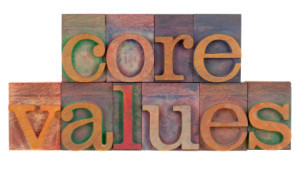 There is a lot of talk recently about culture in an organization, both good and bad. I think what everyone finally agrees on is that business culture matters and those identified as “good” cultures usually produce results far exceeding their peers.
There is a lot of talk recently about culture in an organization, both good and bad. I think what everyone finally agrees on is that business culture matters and those identified as “good” cultures usually produce results far exceeding their peers.
So what makes a culture “good” or “bad?” I believe a good business culture is one that can be easily identified by values and those values are “lived” in the organization on a daily basis. My personal values are Creativity, Caring, Curiosity, and Authenticity. When running organizations, I used my personal values as my guide and sometimes they also became those of the organization. There are literally hundreds of values. The important thing is to identify yours, your organization’s, and then make them part of the cultural DNA of the company. Each value needs a short 1-2 sentence meaning so that your intent is clear and there is no ambiguity about what is intended in this context.
Intentional Culture
Once the values are identified, they can be easily embedded into all aspects of the organization. This is what makes an intentional culture. If you have a value of authenticity, then you would want to hire for this and develop questions that would allow you to decided whether a candidate was a good “cultural” fit. Remember we usually hire people for what they do and fire them for who they are – in intentional cultures we hire for who they are and train if we have to.All processes, procedures, traditions, customers, vendors, products and services should be aligned with the company culture. When this happens in a business, remarkable things start to take place. Employees are energetic and innovative. Customer service excellence becomes a way of life and everything becomes “easy.” Of course, occasionally you will have a bad hire or a bad customer, or a process go awry, but with strong values in place, employees, and management alike know exactly what to do and are empowered to actually make it happen.
Click here to get the “Intentional Culture” chapter from Putting Together the Entrepreneurial Puzzle as a *free download*
The post Business Culture and Values appeared first on Mary Marshall // CEO Coach.
Creativity and the Successful Leader

Stained glass window by Mary Marshall
I work with a lot of amazing CEOs and one of the things I noticed is that they almost always have an outside interest that in some way involves creativity. I took up Stained Glass Art a little over three years ago and was amazed at how “alive” it made me feel. Additionally, I was able to solve a lot of my business problems while working on my glass, (and cutting my fingers!), when I wasn’t even thinking about them. I wondered if that was the case with other leaders?
I asked Kim Obbink, CEO of Filter Digital, here in Seattle what “creativity” meant to her and how it affected her role as CEO. Here’s what Kim had to say:

Sinclair Snow by Kim Obbink
“I have been painting and drawing since I was very young. It was then, and continues to be, the one thing that I absolutely must do alone to do well. It’s my meditation and gives me all of the same benefits: peace, quiet, total abandonment of stress, and focus. I lead with vision, and so practicing executing on a vision through artwork is a great reminder that this is essentially the same value that I bring to my job. Envision something – the future state – then make it happen.”
I love how Kim uses the future as the blank canvas of the business and to paint it – one only needs to see it, then make it happen. This is creativity at it’s best. Kim’s gift as a leader is that not only does she see the “painted future,” she is also able to help others see it as well. Seeing something and being able to engage others in the vision to make it happen is a talent. Were it not for Kim’s creativity and ability to not only envision the future but to paint it for others to see, the business would not have been as successful as it is today.
Creativity is not one of the “soft” skills that only certain people have and it’s not “weak.” It’s a door into a future for the business that creates all sorts of possibilities. Think about when you’ve been stuck on a business problem and I mean really stuck. You know that the same level of thinking that created the problem is not going to solve it but yet you can’t see a way out. Creativity is your friend here. It’s allowing all those possibilities that you dismissed to come back into play. An idea will come and a solution will follow.
The process of being creative outside of the workplace will allow you to build that muscle of “creativity” inside the workplace. It will start working all the time because you have practiced your reps and built up your access to creativity as a strength.
The post Creativity and the Successful Leader appeared first on Mary Marshall // CEO Coach.
January 27, 2016
Is Culture Change Even Possible?
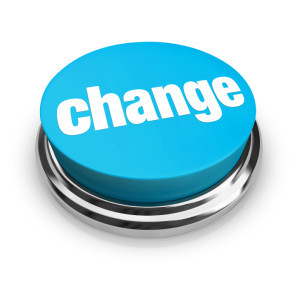
I worked with a brilliant man once who was in the “culture change” business. He went into large companies and helped with mergers of two disparate cultures to move the united company forward or came in after a leadership change to reinforce the new culture. What he said was that he was the “coach” to the organization, not just the CEO, and in that role of coach, he had to first ask questions and really listen to the answers. He always had the most astute insights into the companies “gut” or culture and could usually find the one or two things that would make a course correction. So I’m going to attempt to give you one or two insights into cultural change that might help if you ever find the need to do so in your organization.
The short answer is “yes,” it’s possible to change a business culture. It’s not easy and there are likely to be casualties along the way in the form of personnel departures, but it can be done. Let’s use the story of company “X.” They are a professional services firm specializing in marketing, sales, graphics and web design. The company was the result of a merger of two smaller companies and the combined revenues were $40M. The founder was still with the company, but not working on a daily basis and the organization was led by a CEO who came from a financial background and had no knowledge of the industry. The sales bumped along at a tepid 5-8% growth rate and some of the management team were getting restless as they were led to believe the vision was to grow to $75M and become an acquisition target. No one was happy and some key individuals were departing. All believed that the founder had no idea what was going on.
So what change needed to happen to get the company back on track? First and foremost it needed to get back in touch with what had made it successful in the past – an edgy, smart bunch of individual collaborators that created amazing work for their clients. They had lost their edge and competitors were circling and picking off their talent. The COO came forward and using the work from Dave Logan’s Tribal Leadership. She started with the leadership team and attempted to define the company’s values. She met strong resistance at first, but after identifying the real problem – that the company had lost its focus and needed a reboot – more people bought into the premise. When the leadership team had agreed on their seven core values and definitions for each, they rolled it out to the entire company. They made little table tents with cool graphics and gave one to every employee to put on their desk. They talked about them in meetings and they even used them to help make decisions in the company – it really became their kiddie bumpers on the bowling alley to avoid making any more gutter balls. New clients started to come on board and employees were “enthusiastic” again. Revenue started to climb at a 10-15% clip, far exceeding earlier projections. The company had its “vibe” back.
So what’s the catch? The only person not on board with values and “culture” was the CEO. He declared it a waste of time and demeaned the effort at every opportunity. Most COOs would have given up in the face of such negativity – especially since it could be a very career limiting move to proceed – but this one didn’t and the more support she had via the tangible results in both morale and revenue, the more she pushed forward. He made an attempt to fire her, but the COO had already gone to the founder with the results and briefed her on the initiative so when the CEO tried to have her fired, the founder intervened. What happened next was the surprise, the founder let the CEO go and promoted the COO.
The troops were thrilled and today the company is thriving under “culturally aligned” leadership. The COO had what Logan calls her “hell no” moment when told to shut down the initiative. She knew it was the right thing to do, so she pressed on.
You never know who the casualties will be of cultural change, you also never know who the stars will be, but there will be both and it’s all okay. Be prepared for resistance, acceptance, brilliance and disappointment, and always be willing to change.
The post Is Culture Change Even Possible? appeared first on Mary Marshall // CEO Coach.
January 19, 2016
Every CEO Should Read These Books
Over the years, I have read numerous books on various aspects of business, (as I am sure you have too). In the last 5 years, 3 books have been published that I believe every CEO should read. Each covers a deeply fundamental concept that as a leader, it can be easy to overlook or just not realize. If you want to insure that your leadership perspective is as sharp as it can be, I really recommend these books:
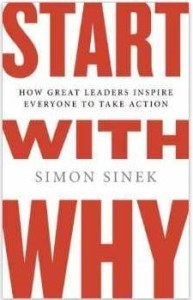 Start with Why – Simon Sinek
Start with Why – Simon Sinek
If you haven’t already read this one, do so now. As a leader, it will be the best read you’ve had in a while because it will help you understand why people will follow you or not – they need to know “why” they should. Sinek talks about how we are constantly told “how” and “what” someone is doing but until we get to the “why” of the matter, we don’t care. He goes into the science behind it and he does a great job of addressing it in his 20 minute TED talk. As a leader, if you learn how to communicate the why of the matter, you’ll be amazed at the difference in the results.
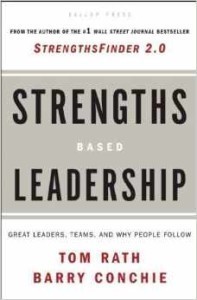 Strengths Based Leadership – Tom Rath and Barry Conchie
Strengths Based Leadership – Tom Rath and Barry Conchie
Not only does every leader need a “go to” tool for assessing talent, they need to know how to evaluate leadership potential. Strengths Based Leadership takes the StrengthsFinders Tool and sheds light on which of the four leadership domains we lead from – Executing, Influencing, Relationship Building and Strategic Thinking – and we each have a strength in at least one of these, as do our leadership team members. By knowing this, we can build more effective teams and utilize everyone’s strengths. This is an excellent tool to help grow your people.
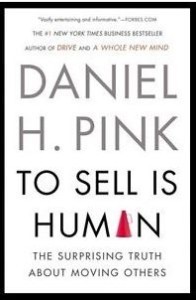 To Sell is Human – Daniel Pink
To Sell is Human – Daniel Pink
This is a great book that demystifies the “selling” perceptions that we all have. Literally, everything we do is selling, we just don’t call it that. And since as the CEO your role is to grow the company, selling is critical. Pink helps illuminate “why” it’s okay to sell. It’s not a dirty word, it’s the way the universe operates. Rather than seeing it as a bad word, or being afraid of it, Pink talks about how we can embrace selling and by doing so, have more success in everything.
I am committed to helping entrepreneurs achieve their dreams and providing resources for them to do so. Reading to develop new levels of understanding is an important piece of this. I have a “Book Recommendations” page on my site with additional books in a variety of areas I believe are really beneficial for entrepreneurs and business leaders. The books in this post are my current top 3 of recent years. What are yours? What books would you add to the list?
The post Every CEO Should Read These Books appeared first on Mary Marshall // CEO Coach.
January 13, 2016
Possibilities
 Recently, I saw a parent teaching a child how to ride a bike. It made me smile to see both the excitement and fear on the little boy’s face as he said “now don’t let go ‘til I tell you,” and then the joy when he realized he was riding all by himself.
Recently, I saw a parent teaching a child how to ride a bike. It made me smile to see both the excitement and fear on the little boy’s face as he said “now don’t let go ‘til I tell you,” and then the joy when he realized he was riding all by himself.
Entrepreneurs face that fear and excitement constantly in the early days of a business. And much like a child who will only learn how to ride a bike, by riding a bike, running a business is the same. The issue is we get jaded and become more cautious and won’t take the risks we did as kids. Kids have that wonderful mindset that isn’t cluttered up with “what is,” like most of us adults. They live in wonder about “what could be.” They see a bike, see others riding bikes, and figure how hard can it really be? It’s muscle memory once you get the hang of it, but it’s a leap of faith on that first ride because you’ve never experienced it before.
If more entrepreneurs looked at their business challenges and opportunities as new adventures, (a new bike ride), instead of something scary or dangerous, or less comfortable than where they are now, more innovation would happen. More risks would be taken, more would be won than lost, and more confidence would be built into the business – more muscle memory, if you will.
The minute we start playing it safe, we backslide. The business exists, growth is at single digits, and we’re okay with the status quo because we “know” what could happen if we risk anything. The real risk is to not risk trying. We need to “think like a kid” who hops on that bike not knowing. Sure he might get a banged up knee or two, but it’s unlikely that he’ll die. Same goes for a business – what if we didn’t “know” what would happen, what might happen instead?
If Jeff Bezos had not started selling books online and amassing one of the most valuable databases and distributions systems in the world, what would online retailing look like now? If he had listened to everyone around him, he would never have gotten on the bike, but he did and look at the results.
Look around your business and see what you need to do or try because what you “know” is probably incorrect. It might have been true at one point, but it’s now become a ball and chain against innovation. Just pick one thing that you’ve been afraid to try or to implement and pretend you’re learning to ride that bike again – just have someone hold the seat until you’re ready to ride! You’ll be glad you did.
photo credit: Look dad, no training wheels via photopin (license)
The post Possibilities appeared first on Mary Marshall // CEO Coach.
January 5, 2016
New Year – New Habits
 We all know that doing something the same way over and over again and expecting different results is the definition of insanity, yet, how often do we actually do this and get frustrated when it doesn’t work?
We all know that doing something the same way over and over again and expecting different results is the definition of insanity, yet, how often do we actually do this and get frustrated when it doesn’t work?
The reason I bring this up is that most of my clients are working on new goals for the New Year, which is important, but it’s also important to see what didn’t work out that you intended to do or accomplish in the previous year. Putting down that you’re going to lose 10 pounds without changing behavior, is fruitless. As is setting a financial or strategic goal that is not rooted in actual behavior that will make it happen.
Keys to Accomplishing Your New Year’s Goals
First, there is no point in beating yourself up for the things that didn’t happen last year. The reality is that there is “gold in them thar hills” and by examining what behavior was at the root of the lack of results. If you can identify the behavior, you can then modify or change it to get different results. Spend some time discussing this with your team. Consider what led to the “non-achievement” of results and see what has to be different going forward. Now you can focus on a behavior that can become a habit.
Habits are formed by repetitive behaviors. I would like to say we are more evolved, but the reality of it is that it takes 30 days to form a habit and most often, we are unconscious that it’s happening. Every morning you stop off at Starbuck’s for your blah, blah, blah complicated drink that has 800 calories. And you pick up a pastry that now, at least in Seattle, has the calorie count glaring at us as we select it. We’re worth it we say. It’s going to be a hard day. I’ll skimp at lunch or dinner. After 30 days, we are going to get the giant drink and pastry without even a word to ourselves and not to have it would seem like sacrilege. The consequences are not only do you not reach the desired weight loss, you actually gain.
Same goes for the office. You are in a hurry. You rush in and don’t greet your assistant, receptionist or workmate. No dire consequences so you do it a few more days and this saves you time. Now it’s a habit and the consequences are that the office rumor is that you are rude, mad, going to lay people off, etc. Productivity goes down and you have know idea what you just did and are now married to your new “habit.”
As habits are formed, they can also be unformed. Pick a different behavior and practice it for 30 days. It will feel awkward at first, like learning to ride a bike, but after 30 days, it will feel like the most natural thing in the world – and you will likely get the results you were looking for. For the New Year, create some new habits, or break the old ones, that will lead to making 2016 a great year for you.
The post New Year – New Habits appeared first on Mary Marshall // CEO Coach.
December 30, 2015
Time for Resolutions or a Revolution?
 For most of us, this is a time for reflection, both personally and professionally. What did we hope to accomplish this year vs. what we actually accomplished? Sometimes there is cause for celebration, but more often than not, it’s a time to rethink, revise, and somehow find the resolve to achieve what we want.
For most of us, this is a time for reflection, both personally and professionally. What did we hope to accomplish this year vs. what we actually accomplished? Sometimes there is cause for celebration, but more often than not, it’s a time to rethink, revise, and somehow find the resolve to achieve what we want.
So we become resolute about what we want to accomplish, just as we were last year, and guess what? Some of the items fall off the list again. So rather than resolve to try once more to accomplish the personal or professional goal that didn’t make the hit list this year, why not attack it differently?
Maybe instead of making resolutions, it’s time for a revolution – an all-out refusal to get to the end of 2016 without having crossed these goals off the list. What this means is that you will have to do something different. Because we all know what doing the same thing over and over and expecting different results is…
Here’s my recipe for starting your own revolution:
Step 1 – Declare. Really and truly commit to each and every goal you are including in your revolution.
Step 2 – Be SMART. Make sure each of the goals in Specific, Measurable, Achievable, Results focused and Time Bound.
Step 3 – Accountability. Decide who or how you will be held accountable. A partner? A colleague? A group? It must be a higher level of accountability than you employed this year in order to expect a different result.
Step 4 – Review/Revise: Determine how often you will review and revise based on progress or lack thereof. Monthly? Quarterly? Biannually? (This does not mean look at your goals in December and say “oops.”)
Step 5 – Celebrate: We often lament our failures, and skip spending time celebrating our wins, which leads our focus to go where? To our failures. Focus on what you want, not what you don’t want. It’s much more powerful. Remembering an accomplishment, the celebration, and the endorphins that were released will keep you focused on more of the success and less of the failure.
Step 6 – Pay it Forward: Share, offer to coach, lend a hand to someone else trying to have a revolutionary year. We can’t do this alone. What goes around does really come around so go first and offer a helping hand.
These steps can apply to your company’s strategic plan or your personal goals for the year. We often forget how much power we have to achieve great things if we only put our minds to it. Look at any of the truly great leaders from history, they all accomplished amazing things against the odds. And it was not for lack of a plan, it was because of one. They all declared a revolution – and then made it happen.
Make 2016 a Revolution Year for you and your company!
Happy New Year to one and all!
The post Time for Resolutions or a Revolution? appeared first on Mary Marshall // CEO Coach.
December 22, 2015
What if You Wondered?
 This holiday season, in addition to saying “thanks” to all those who have helped me, and all those who have allowed me to help them, I wanted to share a thought, or really, a question.
This holiday season, in addition to saying “thanks” to all those who have helped me, and all those who have allowed me to help them, I wanted to share a thought, or really, a question.
As the New Year approaches – what if we no longer had all the constraints we thought we did? What if magic really could happen in our lives and our businesses? Wouldn’t that be a powerful way to look at things? I know, right about now, some of you are probably wondering – is she crazy??
I don’t think I am being crazy. I’m offering each of you the opportunity to see the world and your lives through a different lens. Think of a 5-year-old. Do they know that it’s not possible to cure certain diseases, stop wars and eliminate world hunger? They believe in wonder and possibilities. They look at the world around them and wonder how things work, why things are the way they are and how they fit in. They are still discovering possibilities. It is only when they run into a road block or an “adult” that tells them how it is that they lose the sense of wonder and possibility which gets replaced with someone else’s version of “what is.”
So just for today, think about all the possibilities in your life or in your business that you have discarded because you “know” they can’t happen or that reality is preventing them from happening. What if you didn’t know? Would you look for solutions differently? Would you believe that you could make it happen? I suggest that you look at business planning for next year as if you didn’t already know what was possible and see what shows up. You might be surprised.
This applies even more to our personal lives. How many times are we hampered by our self-limiting beliefs? Logically, we know they aren’t true and yet we operate on a daily basis as if they are. Sometimes skepticism, cynicism, resignation, and disappointment have come to roost as well, and we aren’t even consciously aware of it. Maybe we need to “wonder” and ask “what if” to release ourselves? How many possibilities would open up for us?
A recent NPR radio host was interviewing a Harvard Business Review article author who did a study on “experts.” They found that when someone is labeled as an “expert” they cease to find things wrong with their thinking and look for proof they are right, thus stopping the opportunity to learn or even be wrong. Although you might think you’re the expert in your life….just for this moment, instead of trying to find proof you are right, assume you are not and see what opens up.
Enjoy the wonderment of the season, the possibilities and “what if’s.” If you’ll only allow yourself to think like a 5-year-old and throw off the shackles of your “knowledge” for just a moment and live in a world where anything is possible.
photo credit: Jongen blaast kaars in kerstboom uit via photopin (license)
The post What if You Wondered? appeared first on Mary Marshall // CEO Coach.
December 16, 2015
Listening, Presence and Connection
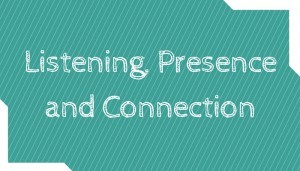 I was recently on a 6-hour flight and my travel nightmare came true. The seat to my left was occupied by a talker, and not just any talker, but a marathon talker! I had work to do for the conference I was attending and had planned to do reading, but after an hour, it was clear he was not going to stop. Ironically, I was reading about leadership and “being” a leader so I finally decided to put my work aside and just engage in the conversation that was going to happen, with or without me.
I was recently on a 6-hour flight and my travel nightmare came true. The seat to my left was occupied by a talker, and not just any talker, but a marathon talker! I had work to do for the conference I was attending and had planned to do reading, but after an hour, it was clear he was not going to stop. Ironically, I was reading about leadership and “being” a leader so I finally decided to put my work aside and just engage in the conversation that was going to happen, with or without me.
Then a funny thing happened. It was an amazing conversation with an amazing man named Dennis. Once I let go of all of my “stuff,” – impatience, judgments, frames of reference, stories, etc.- that were clouding my mind about the situation I could listen. This man had fallen off a ladder from 25ft up about 25 years ago and was given up for dead. After he “refused to die,” they got to work on fixing him and through 2 years of surgeries on his back and brain, he recovered. He was never able to do construction again, however, because he was such an inspiration to all his fellow patients at the VA rehab facility, he was encouraged to consider becoming a vocational rehab specialist. He did and long story short, he ended up getting both a Bachelor’s and a Master’s while doing vocational rehab work full-time. He has since retired and was on a trip to Cancun with his wife for a couple of weeks.
As someone who has also experienced a serious fall from a ladder, I knew exactly what he was talking about with the recovery, although what he went through makes mine look like a cake walk! We both realized two things during the process that someone who hasn’t had a bad accident would know. First, that moment when you are falling and everything goes in slow motion, you consciously try to minimize the damage you know is coming. Second, that at some point in your recovery, you will want to give up. It’s just too hard.
What he also so eloquently explained was that if he had not lived, he would not have known the joy of helping others in similar circumstances, helping them through that “dark night of the soul” when you aren’t sure you will make it to the other side. I know exactly what he’s talking about because each of us, regardless of having an accident, affect so many lives without ever knowing it. Each and every day, someone’s life is better because we were in it – sometimes doing nothing more than being there.
Dennis is a hero in my mind and I am so thankful he was sitting next to me on that plane. And I’m grateful that I put everything away, (especially the stories in my mind), and was present for an amazing conversation. He left me with the motto he lives by – “If you’re not having fun, you only have yourself to blame”. I immediately looked in the mirror and realized he was right.
The post Listening, Presence and Connection appeared first on Mary Marshall // CEO Coach.
December 9, 2015
Business Ethics
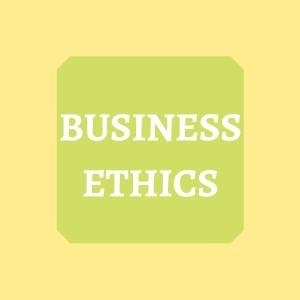 Ethical challenges face businesses every day. How they navigate them says everything about their corporate or business culture. The Wall Street Journal had good piece last month regarding the ethical challenges facing entrepreneurs and the statistics were somewhat surprising. A full 35% of employees of small businesses had observed misconduct and 58% of that misconduct was by managers. This means a full 1/3 of small businesses are experiencing misconduct, and the number is likely higher because those are just the ones who reported it.
Ethical challenges face businesses every day. How they navigate them says everything about their corporate or business culture. The Wall Street Journal had good piece last month regarding the ethical challenges facing entrepreneurs and the statistics were somewhat surprising. A full 35% of employees of small businesses had observed misconduct and 58% of that misconduct was by managers. This means a full 1/3 of small businesses are experiencing misconduct, and the number is likely higher because those are just the ones who reported it.
That’s not a good omen for small business. The article went on to talk about some of the reasons for this misconduct and most of it related to observations of lying to investors, to employees, and to competitors. Some was around anti-competitive practices and some was around abusive behavior, but the lion’s share was “lying.”
The problem with any of this behavior is that we all know that it’s never just one lie. People get into the most trouble when they try to cover up the lie, thus spawning more lies. And once you start down that slippery slope, it just all becomes much easier. Ever been around a practiced liar? Once they get going, you really want to believe them, even though you know what they are saying is not true!
Your Business Reputation
At the end of the day, unethical behavior of any sort is bad for business. Personally, we have our reputations to guard. They are uniquely ours, no one can take or give us anything to do with our own reputations. Businesses are the same. You have one “reputation” as a business and when unethical behavior, specifically lying to anyone, starts to happen, everyone knows. There are no good reasons to lie. Sometimes it’s okay not to say anything rather than lie, but lying never really works in the long run.
Businesses have a hard time living down a bad reputation. It is so hard to come back from that so why go there in the first place? Studies have also shown that customers and employees alike are more apt to be loyal when a problem is acknowledged and a remedy sought vs. trying to cover it up. Everyone makes mistakes, those who admit it show leadership.
At the end of the day, how do you want to be remembered? Think about the next time you have to make a tough decision and are close to that ethical line. Walk away, far away from it. Remember Enron? They didn’t start out to bilk investors and employees of every dollar they had, but they got greedy, cut corners and stepped over that ethical line so often it became their culture and eventually, it blew up. That is an extreme example, but if the percentage of unethical behavior happening in small business is as high as the article found, there could be more Enrons on a smaller scale. Don’t be that business.
The post Business Ethics appeared first on Mary Marshall // CEO Coach.



